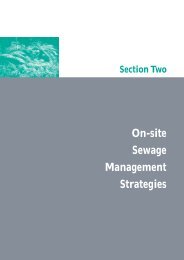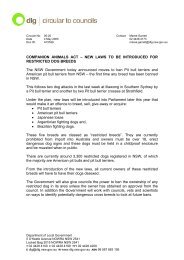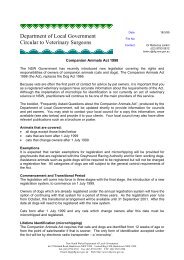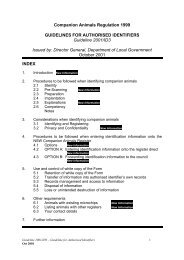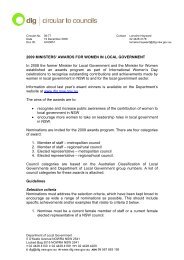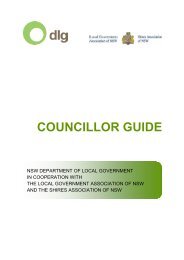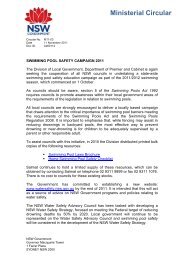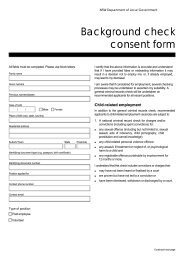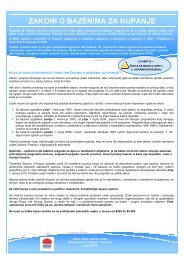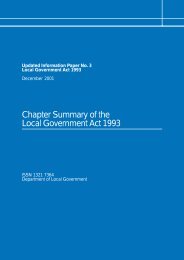Integrated Planning and Reporting Manual - Division of Local ...
Integrated Planning and Reporting Manual - Division of Local ...
Integrated Planning and Reporting Manual - Division of Local ...
You also want an ePaper? Increase the reach of your titles
YUMPU automatically turns print PDFs into web optimized ePapers that Google loves.
6. THE ANNUAL REPORT<br />
6.3 Financial reporting<br />
The Annual Report should also include a financial summary, showing key income <strong>and</strong> expenditure<br />
areas for the past financial year. Although full financial statements are included, many people find it<br />
challenging to read these statements, so it is helpful to provide some basic interpretive information<br />
for the community as well. Councils are encouraged to use diagrams <strong>and</strong> charts to help present the<br />
information in a user-friendly manner.<br />
6.4 Asset <strong>Reporting</strong><br />
Councils must continue to prepare asset reports in accordance with the requirements <strong>of</strong> the:<br />
<br />
<br />
<br />
<strong>Local</strong> Government Act <strong>and</strong> Regulation<br />
NSW <strong>Local</strong> Government Code <strong>of</strong> Accounting Practice <strong>and</strong> Financial <strong>Reporting</strong><br />
Australian Accounting St<strong>and</strong>ards<br />
Within five months after the end <strong>of</strong> each financial year, a council must prepare a report as to its<br />
achievements with respect to the implementation <strong>of</strong> its Operational Plan.<br />
The report must contain, among other things, a number <strong>of</strong> particulars applicable to asset<br />
management. These include:<br />
the assets acquired by the council during that year, <strong>and</strong><br />
the assets held by the council at the end <strong>of</strong> that year, for each <strong>of</strong> the council’s principal<br />
activities.<br />
Additionally, councils are also required to report on the condition <strong>of</strong> the public works (including<br />
public buildings, public roads; <strong>and</strong> water, sewerage <strong>and</strong> drainage works) under the control <strong>of</strong> the<br />
council as at the end <strong>of</strong> that year, together with:<br />
an estimate (at current values) <strong>of</strong> the amount <strong>of</strong> money required to bring the works up to a<br />
satisfactory st<strong>and</strong>ard, <strong>and</strong><br />
an estimate (at current values) <strong>of</strong> the annual expense <strong>of</strong> maintaining the works at that<br />
st<strong>and</strong>ard, <strong>and</strong><br />
the council’s program <strong>of</strong> maintenance for that year in respect <strong>of</strong> the works.<br />
The report on the condition <strong>of</strong> public works is also included in the financial reports <strong>and</strong> is known as<br />
Special Schedule 7. Councils must complete this Schedule each year.<br />
Councils should endeavour to ensure that their asset management system can readily, if not<br />
automatically, prepare the annual reporting requirements pertaining to council assets. Explanatory<br />
notes should be included where necessary.<br />
The report on the condition <strong>of</strong> public works (Special Schedule 7) should flow directly from the<br />
Delivery Program, which should define performance indicators for both existing <strong>and</strong> proposed levels<br />
<strong>of</strong> service. These performance measures can be used to quantify the upgrade costs (or degree <strong>of</strong><br />
over-servicing) between existing <strong>and</strong> target service levels.<br />
Prior to preparing the annual financial statements, it will be necessary to close <strong>of</strong>f the asset register<br />
<strong>and</strong> reconcile the balances for acquisition cost, current cost, depreciation charged for the year,<br />
accumulated depreciation <strong>and</strong> net asset revaluation increments to the corresponding control<br />
accounts in the general ledger.<br />
<strong>Planning</strong> & <strong>Reporting</strong> <strong>Manual</strong> Page 109 <strong>of</strong> 115



